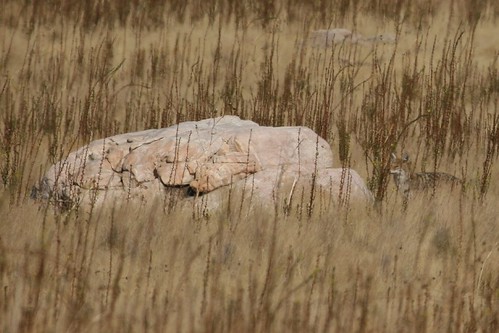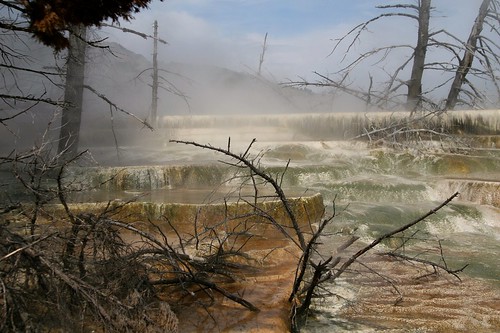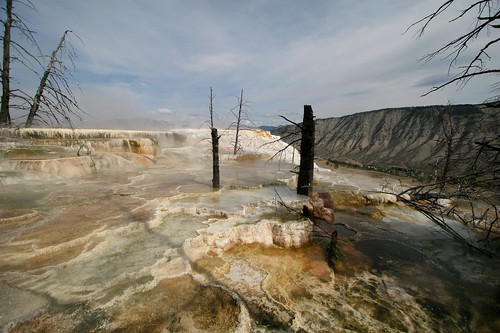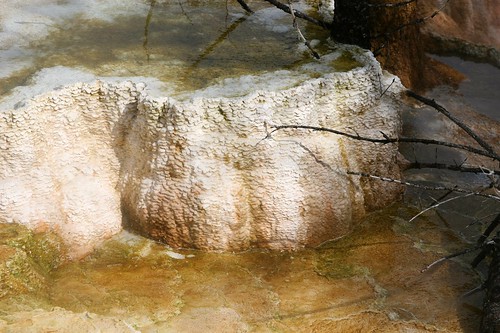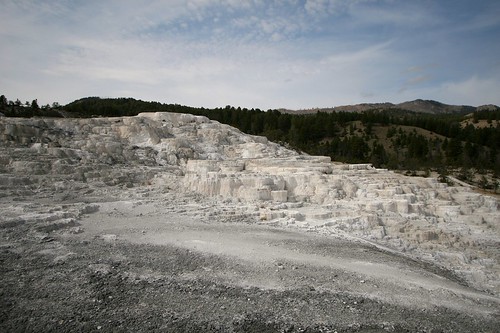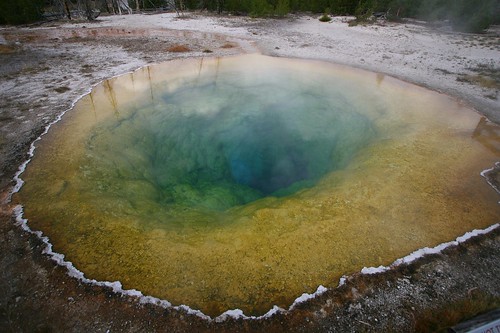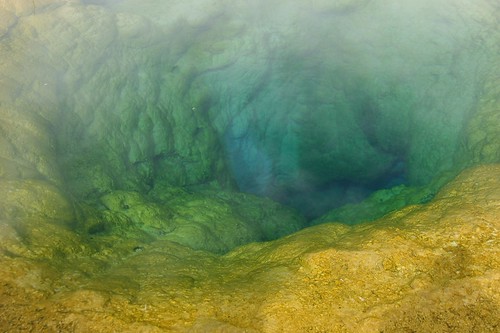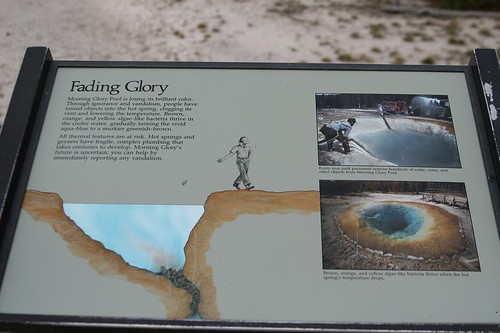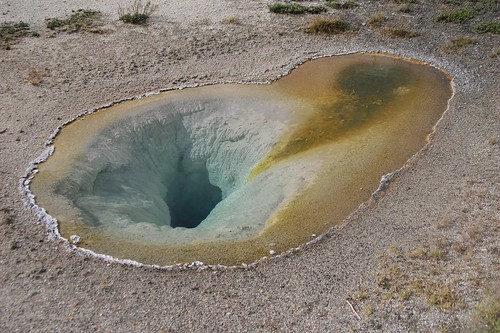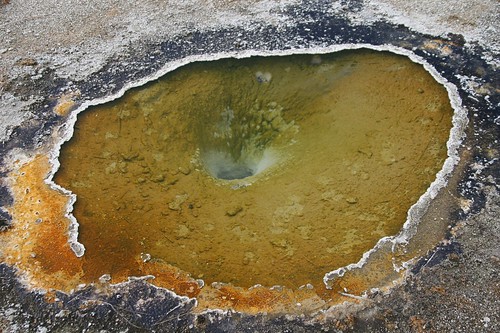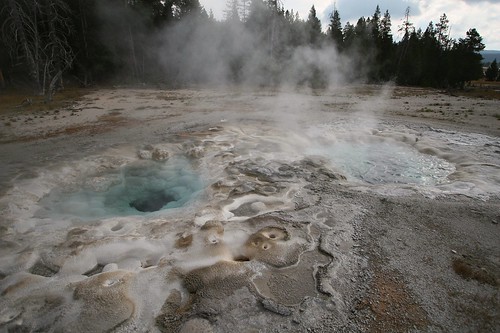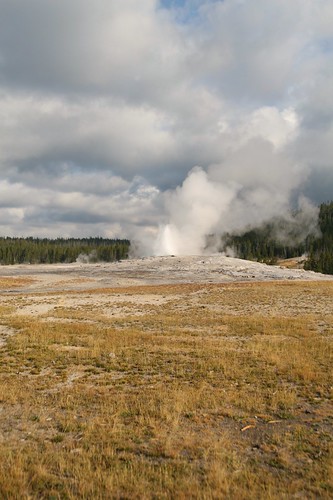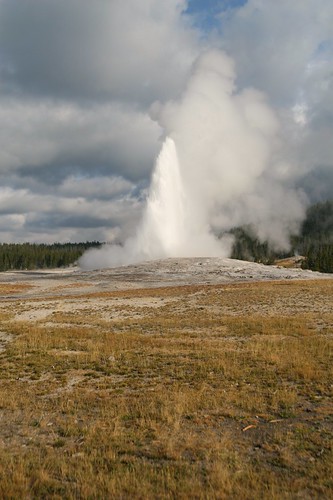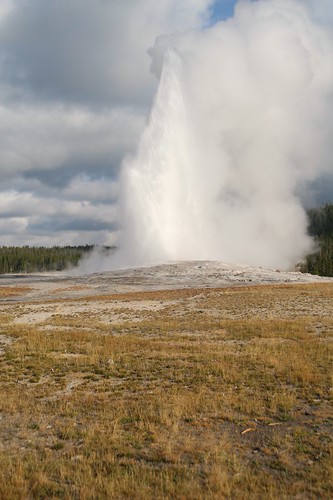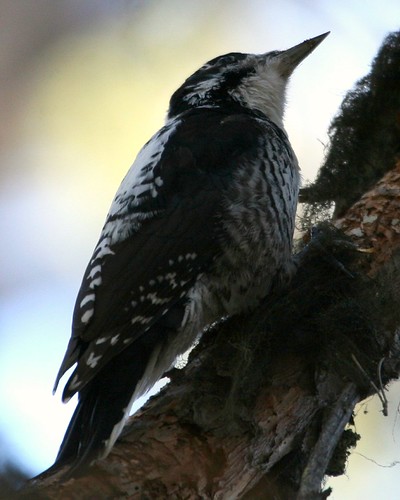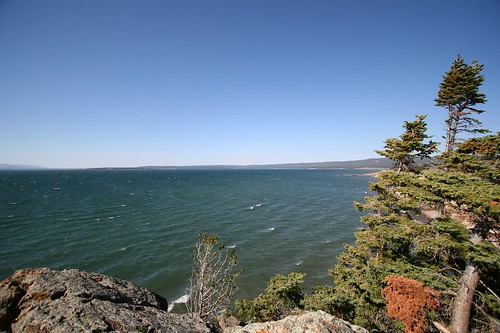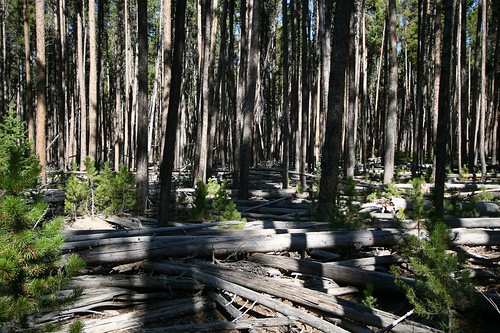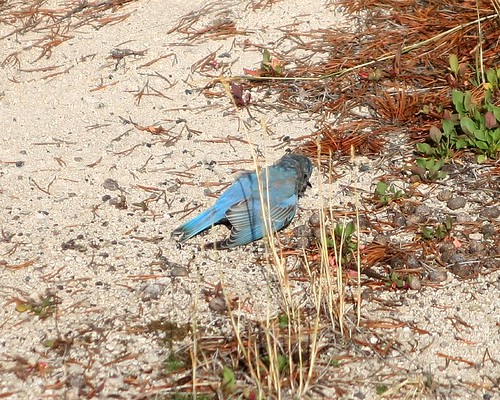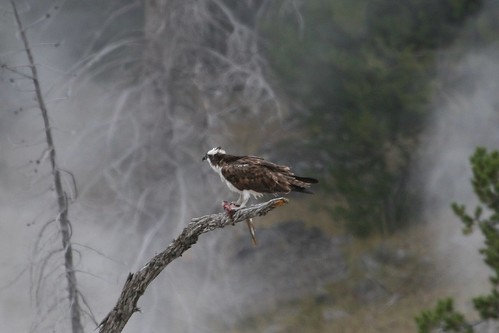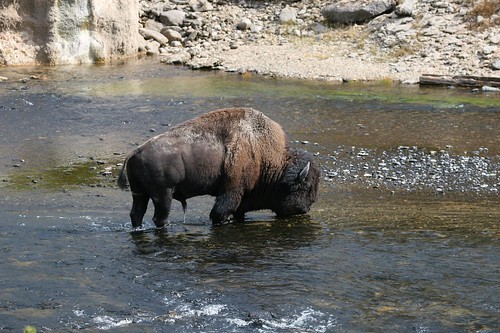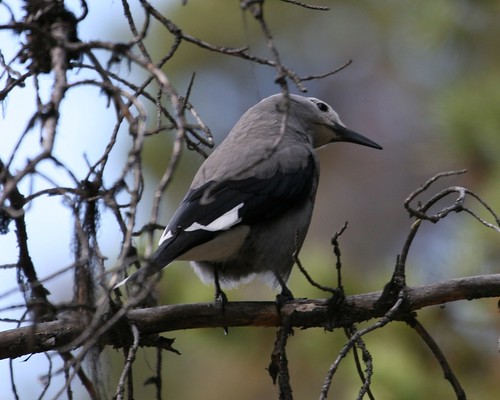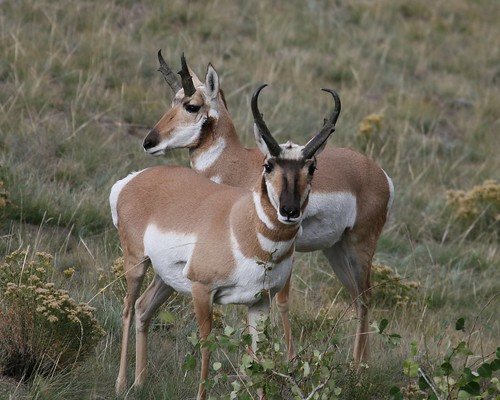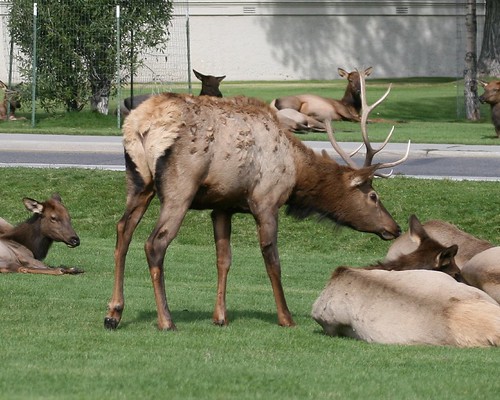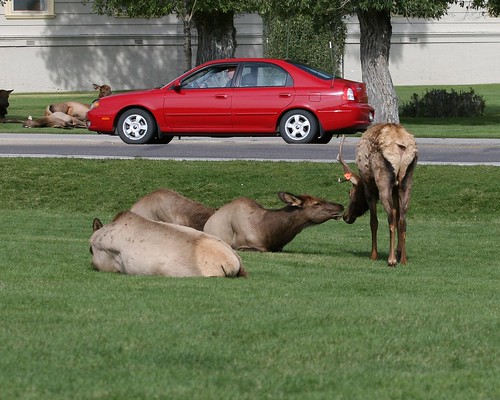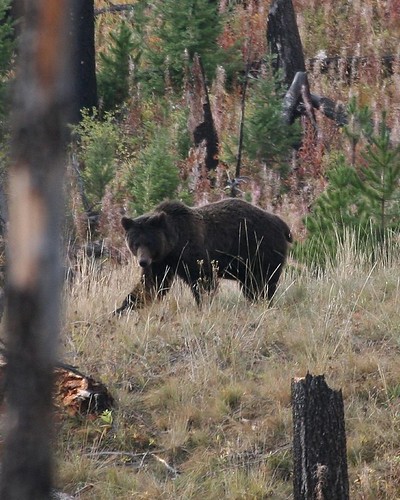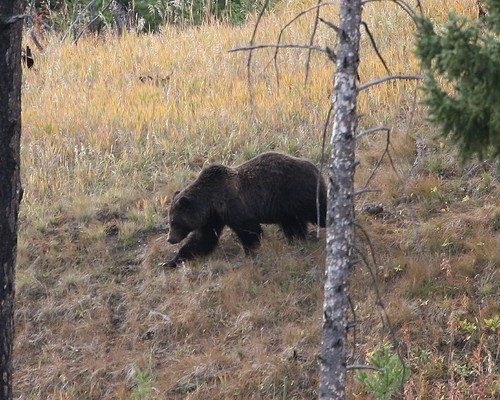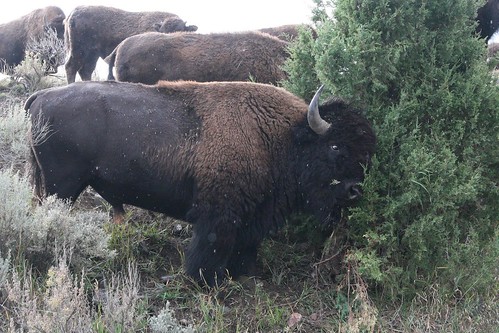Today Tammy and I took a short hike adjacent to Yellowstone Lake. The very beginning of the hike, however passed through a field of low scrub, and next to a small pond that contained a few rafts of ducks. After we were done with the hike, I grabbed my scope so that I could attempt to identify the ducks in that small pond, and Tammy waited for me in the car.
I had been puzzling over the ducks with no clear identification for about five minutes, when I looked back towards the car. That is when I saw two dogs running free, coming out of the small lot where our car (and several others) were parked. And then I realized that they were not some one's pets, but two
Coyote. The two Coyote kept trotting toward me as I watched them with interest. One eventually angled off to the small pond I had been watching, while the other kept heading my way, apparently oblivious (or uncaring) to my presence. My curiosity actually shifted to a bit of concern as I imagined this wild dog discovering me and not liking me one bit. I actually clapped my hands to make sure the Coyote knew I was there, but he did not react at all.
Just before I had to worry about my next move, however, the closer of the two Coyote stopped and stared at the ground. He had detected something that caught his interest. He was probably 50 feet away from me. He eventually did this jump/dive move like he was pouncing on something. I remember the dog I had while growing up doing the exact same thing when he was pursuing a mole in our backyard. When the Coyote came up with some critter in his mouth that, two chomps later, was swallowed whole, I was kicking myself because my camera was in the car with Tammy. Note to self: always carry your camera in Yellowstone because you never know what you might see.
I was saved from having to worry about the Coyote being any closer because another person was walking about with their
Chihuahua, and the Chihuahua was not on a leash. The two Coyote had come back together and both had noticed the Chihuahua, and were not happy. The man who owned the Chihuahua apparently realized his best friend was about to become a meal, because he quickly put his dog on a short leash.
Luckily, the Coyote both decided to move on, leaving me with a nice memory but no picture, and the Chihuahua owner the opportunity to ponder the virtues of keeping his pet on a leash.
Even though I did not capture a photo of this particular Coyote, and its quick meal, here is a photo that I managed to grab on Antelope Island of a Coyote as it ran into the cover of tall grass. The one on Antelope Island was much much farther away than the one I saw today.
